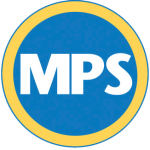More Public School Funds for Vouchers
Walker gives voucher schools $283 million more, takes $93 million from public schools.
Governor Walker has proposed significantly increasing resources for Wisconsin’s public schools, a move that has gotten a great deal of attention – and has attracted some controversy for the size of the increase. But his budget also includes a major increase in the amount of public money that goes to pay for private school tuition, a fact that has been mostly overlooked.
Through the state’s private school choice program, Wisconsin uses publicly-funded vouchers to pay tuition at private schools across the state. To participate in the program, students must have family incomes of up to 300% of the poverty level if they live in Milwaukee or Racine (about $73,000 for a family of four) or of up to 185% of the poverty level if they live in the rest of the state ($45,000 for a family of four). About 36,000 students are expected to receive publicly-funded vouchers to pay for private school tuition next year.
The Governor’s budget proposal increases the amount that the state pays private schools, by $217 per student in the first year of the two-year budget, and then by another $217 in the second year. That’s in the same neighborhood – but slightly more – than the per-student increase that public schools would receive: $200 in the first year, and another $204 in the second year.
The state actually spends more money for each student attending private school than it does for each student attending public school, a recent memo by the Legislative Fiscal Bureau shows. Under the Governor’s budget, the state would spend an average of $6,703 on each public school student in 2019, an amount that includes general aid, categorical aid, and aid reductions for the voucher program. In comparison, the state would pay pay private schools $7,757 for each student in kindergarten through 8th grade participating in the voucher program in 2019 and $8,403 for each high school student.
The state pays more per student to private schools than public schools, but it’s difficult to make valid apples-to-apples comparison across both systems. In addition to state aid, public schools also receive money from the property tax, an amount that is not included in the per-student amounts described above. But public schools are also required to provide a higher level of services to students than private schools are. For example, vouchers schools are not required to provide transportation to students, or provide the same special education services that public schools are. The state does not require teachers in voucher schools to obtain teaching licenses, and does not require voucher schools to do a background check on employees. Voucher schools can kick out students who don’t meet academic or behavior standards, while public schools must accept all students and try to provide services to meet their needs.
Governor Walker has proposed a big boost to public schools in his budget – but has matched it with a big boost to private schools as well. His budget continues Wisconsin on the track of funding two separate school systems: one governed by locally-elected school boards accountable to voters and taxpayers, and the other a system of publicly-funded but privately-operated private schools that operate without the same level of accountability. Increasing the amount that Wisconsin spends on private school tuition vouchers decreases resources available for public schools, which educate the large majority of Wisconsin students.
Wisconsin Budget
-
Charting The Racial Disparities In State’s Prisons
 Nov 28th, 2021 by Tamarine Cornelius
Nov 28th, 2021 by Tamarine Cornelius
-
State’s $1 Billion Tax Cut Leaves Out 49% of Taxpayers
 Sep 21st, 2021 by Tamarine Cornelius
Sep 21st, 2021 by Tamarine Cornelius
-
TANF Program Serves a Fraction of Poor Families
 Aug 30th, 2021 by Jon Peacock
Aug 30th, 2021 by Jon Peacock






















Bruce Murphy, did you create this misleading headline as well?
The state is increasing the per student amount that voucher schools receive while also reducing how much state aid goes to school districts. So doesn’t that in fact mean more money for vouchers and less for public schools?
Vincent, not only does that headline make it sound like they’re giving an additional 283 million in addition to what they were already giving to voucher schools, it also makes it sound as if they are taking away $93 more (rather than reality, that it’s going up almost the same amount) for public schools.
Another headline bias example. You have to read real close in the body to figure out the false statement.
How would AG respond? I think it would be something like this. Actually you are referring to the subheadline, not the headline. There is a difference. The headline has no figures in it.
What would your subheadline be?
The lack of accountability in voucher schools is the kicker here.
Why is this still the case? And the funding keeps increasing?
So $1000 more for private school voucher than public schools. No accountability for private skills.